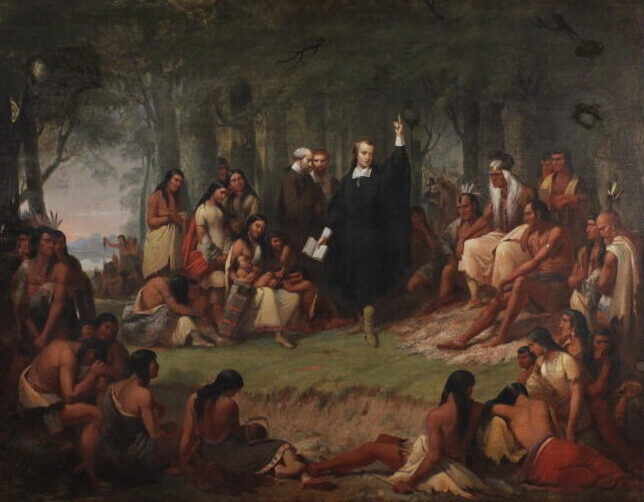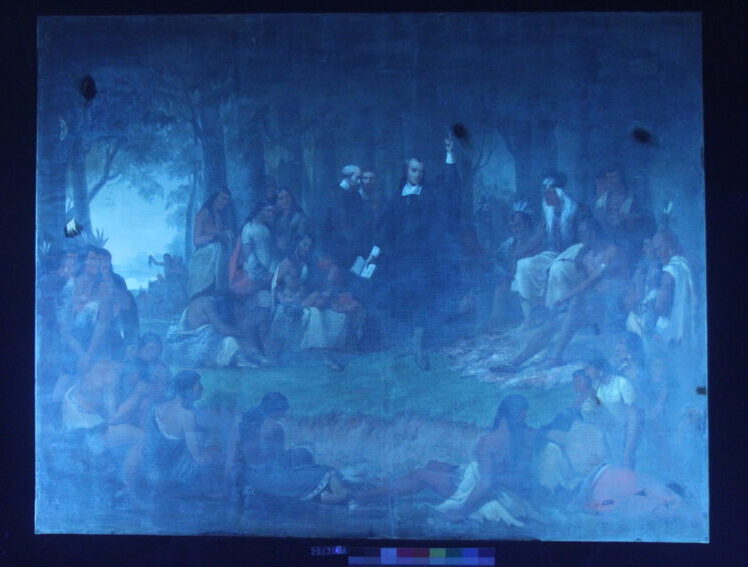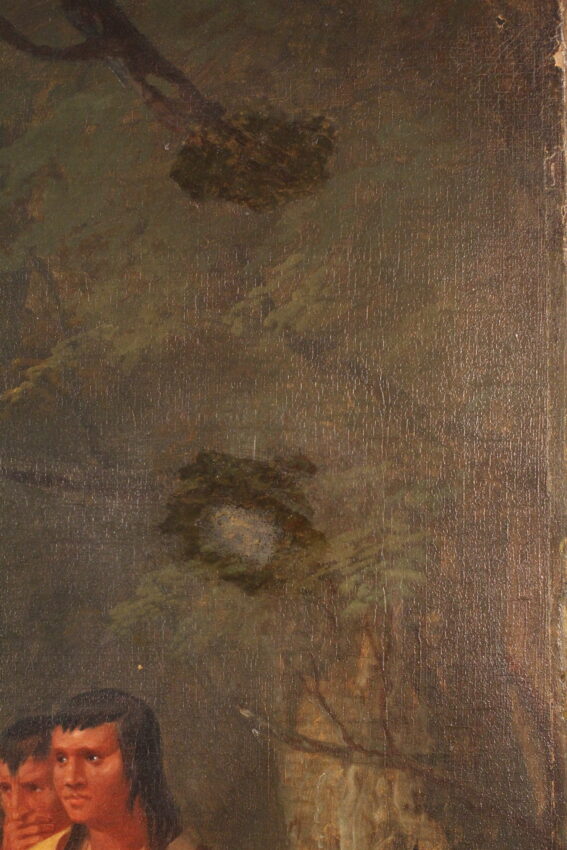Stefan Dedecek, Conservator of Paintings, Murals, and Polychrome Surfaces at McKay Lodge Conservation Laboratory always takes the least invasive path to the conservation of paintings, but sometimes more intervention is needed – like relining a painting.

This was especially true for a large scale oil on canvas by Tompkins Harrison Matteson entitled John Elliot Preaching to Indians, 1849. The subject matter features a young John Eliot conducting a sermon to a group of Native Americans in a forest clearing.
The painting was in unstable condition due to failed previous restoration campaigns. A previous wax lining had been applied at some point. A thick, discolored varnish not only clouded the image, but areas of heavy overpaint covered damage and abrasions. The overpaint was readily evident under an examination with Ultra-violet (UV) illumination; in this case overpaint is shown as numerous dark spots which do not fluoresce like the aged original paint. Age-related craquelure was also present and not unexpected for this 172 year old painting.

Cleaning tests were conducted to reduce the aged varnish as well as a normal accumulation of surface dirt over the years. Reduction of the aged varnish and overpaint with both nonpolar and polar solvent mixtures revealed the full extent of the damages. In order to perform a relining of the painting, a protective facing was applied to the front of the artwork. This secured the paint film when the painting is removed from its stretcher for treatment.

The old wax lining was removed and was followed by flattening distortions in the canvas support. Tears, punctures, and losses in the support were filled with canvas inserts and mended at this time.
The facing was removed, and the painting was lined on a new support with a heat seal conservation adhesive and a interlayer of additional fabric. The old stretcher was replaced with a new custom-made structure, and the painting was then mounted onto a new stretcher.
After the relining of the painting was complete, it was now time to recreate areas of loss with fill material and carefully inpainting. Conservator Dedecek filled and applied an isolation coat of varnish. He then inpainted details which had been otherwise lost. A final, overall varnish was applied to protect the painting.

After treatment, the colors appear as close to the original artist’s colors as possible. The new auxiliary support and canvas provide stability for the large scale work of art. The frame was also restored and equipped with new hardware and an archival backing board.
Tompkins Harrison Matteson was an American Painter born in New York State. He is known for his historical, patriotic, and religious themes, and ran a studio in New York City in mid 1800s. He died at the age of seventy-one.
John Eliot, a Puritan missionary, was born in England in 1604. After receiving an education from Jesus College in Cambridge he emigrated to Boston at the age of twenty-seven. He soon began preaching to the local communities, even transcribing the Bible into the Algonquian language. He died a decade short of the 18th century in 1690. Eliot is just one missionary in the movement of European missionaries to who sought to Christianize American Indians.
To learn more about current indigenous cultures and history, here is a list of Native American Museums by state.
